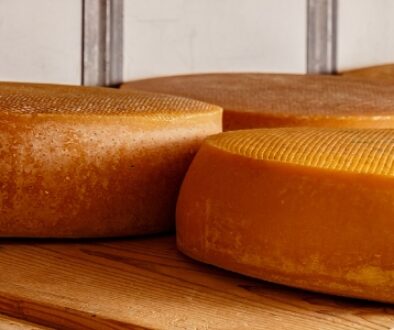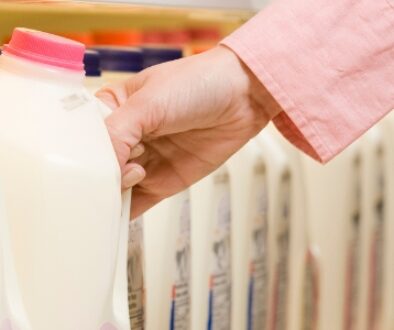Dairy Microbiology & Spoilage Prevention
As a dairy community, when there is a trend in complaints or in-house defects noted, we need to investigate further into microbiology & spoilage prevention.
Many address inconsistencies in their products. When early spoilage occurs, the typical chain of events unfolds in this way: We e-mail our QA department; they pull hold samples, respond with their findings and oftentimes that may be the end of the investigation.
This time let’s dig deeper — especially if it is occurring more often than we’d like to admit. Sure, the product is, in most cases, safe for consumption; but it sure doesn’t taste as fresh and wholesome as we’d like it to. When this occurs as a trend, do we address it with increased testing for microbes we may not plate for every day? Do we get other team members involved to help find the source of the contaminant that might be causing this off-flavor? Or do we chalk it up as a defect likely due to a distribution or temperature abuse issue?
As a dairy community, when there is a trend in complaints or in-house defects noted, we need to investigate further. All levels of management should take interest and part in this.
For example, let’s take a look at Bacillus cereus in milk. This spore-forming gram-positive bacterium is an optionally motile and a facultatively anaerobic saprophyte. To decode the previous sentence: Spores: a rounded resistant form adopted to survive in adverse conditions. Gram-positive: simply an identification made by the gram stain which identifies two broad categories of bacteria. Optionally motile: a proportion of these bacteria can move, more common in biofilms, and can enhance their coverage. Facultative anaerobe: can make ATP (survive) in the presence or absence of oxygen. Saprophyte: Lives on decaying material. In other words, this microbe is versatile and persistent. Capiche?
Dairy processors are constantly facing the ill effects of this contaminant due to its ubiquitous and stubborn nature. Oftentimes, it persists for months if not addressed appropriately. This brief discussion will offer helpful insight for methods of prevention, identification, and elimination of this and other spoilage organisms with which we may have to go into “battle.” Similar methodologies can be used for many types of high microbial counts or spoilage issues.
B. cereus is abundant in the environment, mainly in soil, silage, feces, and garbage. When present in raw milk, sporulation is induced by pasteurization or other environmental stresses. Consequently, these spores can survive the pasteurization process and can, therefore, contaminate dairy products and create quality and safety issues. The most common defect is early spoilage.
Dairy products have a lower incidence rate for B. cereus food poisoning than heat-treated foods such as rice and pasta. However, when it occurs due to toxins produces by this bacterium, the emetic and diarrheal syndromes are not to be taken lightly.
Prevention is the Best Defense
Prevention is, as always, the best defense to minimize risk with all types of contaminants. Due to the resilience of this particular bacterium, it poses an even higher risk when present in significant amounts in the raw milk supply.
When you become aware of certain producers or routes that continually carry high micro counts, you should address them with urgency. Working with your producers or field reps to aid them in any way you can with education on equipment cleanliness and maintenance, as well as high standards of milking hygiene is key.
An avenue that many plants overlook is reviewing of formulas, processes, and ingredients that may increase the opportunity for the presence and growth of this and other bacteria.
If you are not routinely running the Lab Pasteurized Count (LPC) test, this could also be added to your daily regimen. Bacteria that survive the lab pasteurization step are then enumerated using the SPC procedure.
The LPC test determines the levels of thermoduric bacteria and is the primary means of detecting sources of organisms responsible for high counts in the final product; it is used as an indicator of on-farm sanitation. Counts >200 are indicative of milking conditions that could use extra attention. The LPC is the number of bacteria per milliliter of milk that survive laboratory pasteurization at 62.8° C (143° F) for 30 minutes.
Eliminating B. Cereus can take time. This organism has an outstanding ability to adhere to stainless-steel surfaces and, therefore, increase the formation of biofilms. These biofilms are very resistant to standard cleaning regimens and require a high sense of urgency from our chemical suppliers. Optimizing alkali-based clean-in-place systems can increase the cell removal process.
These biofilms may occur in both storage and piping systems and will likely contain numerous types of bacteria, including B. cereus. When present in pasteurized silos, they cause systemic post-pasteurization contamination. Diligence in minimizing B. cereus will have a positive effect on many of the dairy microorganisms we all aim to eliminate every day in the processes. Put on those micro “thinking caps” — you’ll thank yourselves later!
Keep Up to Date
Find all of HART Design & Manufacturing current industry news here.
Source: Dairy Foods




